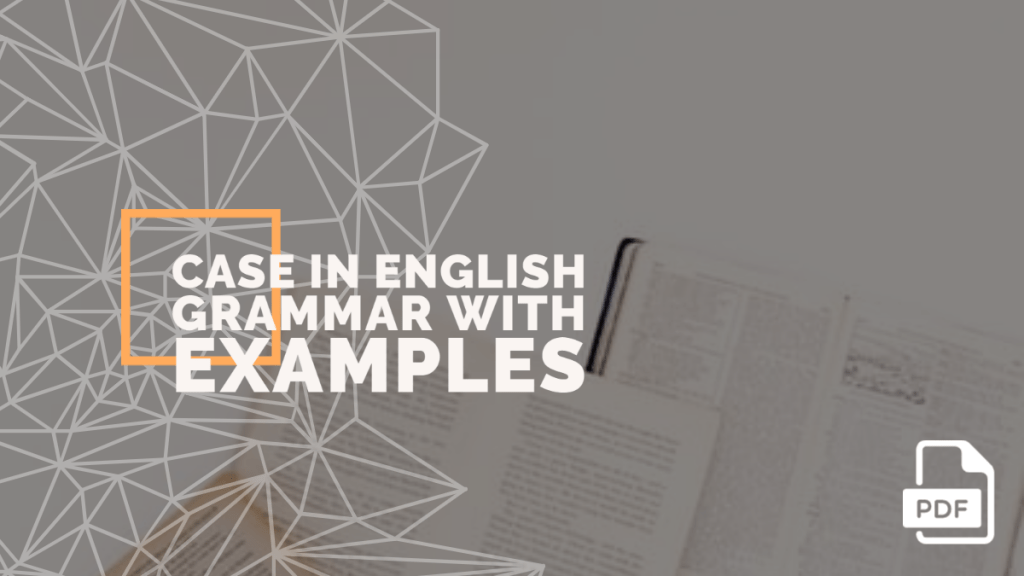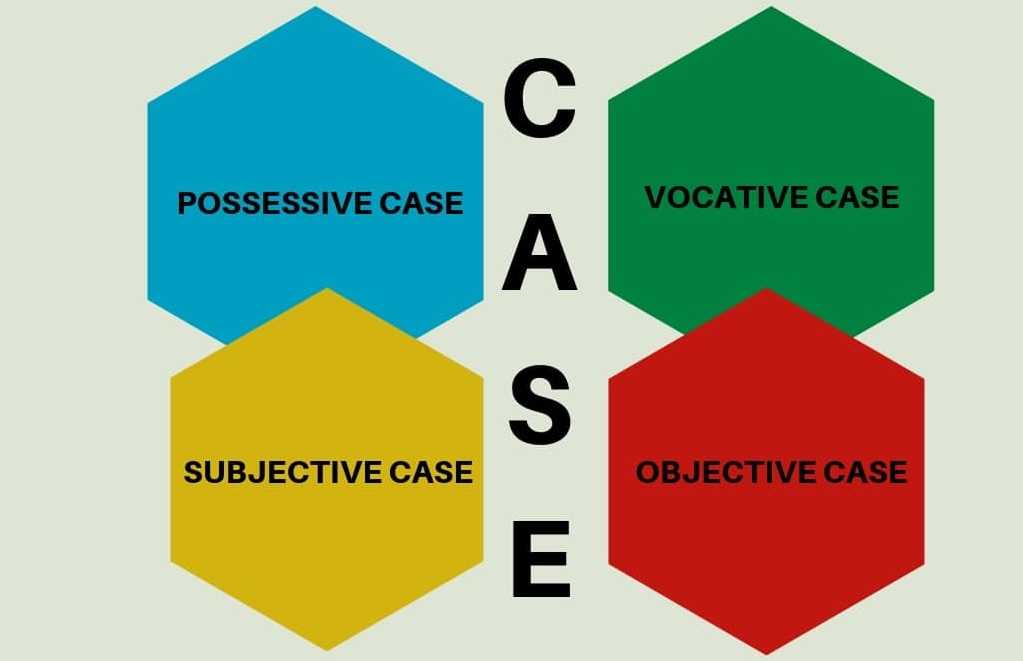What is Case in English Grammar with Examples [PDF]
Hello readers, welcome to another new lesson of English Grammar, that is Case, in this lesson we are going to discuss what is case in English grammar and also we are going to see types of a case with suitable examples. To download the lesson in PDF format, please find the downloadable link attached below in the article.

Definition of Case:
A grammatical case indicates the function of nouns and pronouns in regards to their relationship with other words in a sentence.
In other words, it refers to how these two are used with other words to make a statement.
The value of these two together with an adjective, numeral, and participle reflects the grammatical function indicated by that word in a sentence or phrase.
It is also essential to understand what is a noun and a pronoun. A noun is the name of a place, person, thing, action, idea or quality.
It can either be classified under common or proper. The proper ones specifically refer to the individual name of a place, person or thing.
On the other hand, a pronoun is a phrase or word that is used as a substitute for a name. Most languages have extensive case systems, which have nouns, pronouns, adjectives and determiners all varying due to use of different suffixes to indicate their specific case.
However, the three common types include subjective, objective and possessive, which shall be discussed including examples each.
Types of Case
So, How many types of case in English Grammar? There are generally four types of Case. Those are:
- Subjective Case.
- Objective Case.
- Possessive Case.
- Vocative Case.

Let me discuss them all.
Subjective Case
It is also known as a nominative case.
Any word that is used to identify any names of the place, class of people, things or to name a specific of these things and a pronoun is in the subjective when an author uses it as the subject in a sentence or as a predicate noun.
It is also applicable when the name is used as a complement of being a verb. Here are some examples.
- She works very hard in her job.
- David works as a manager.
- I love to attend dancing classes in my free time.
- Reading is fantastic and advantageous.
Objective Case
In this case, names and pronouns are used as direct or indirect objects in a sentence or even as an object in the preposition. It is also known as the accusative verb [External Link]. Here are some examples.
- I visited Sam.
- Alex cannot eat pizza.
- She loves Him.
Possessive Case
They indicate a relation of belongings or possessions between two nouns or a pronoun and a noun.
Notably, here an apostrophe is used to show a possessive name but some personal and relative pronouns [External Link] change their form to prove ownership.
Something to note is that pronouns do not have apostrophe hence it is crucial to differentiate between “its” and “it’s” as “its” is possessive while “it’s” represents “it is” among others hence one should be keen. I will provide some examples to make this statement clear.
- Anne’s house is near the railway station.
- Where did you find his pen?.
- Jacobs’s wife was involved in an accident.
Vocative Case
It’s another kind of case that is almost similar to the subjective one in terms of structure.
However, it indicates a person in a paragraph that is being addressed directly by her or his name. The name is usually separated using a comma. Here are some examples.
- Celina, could you please open the window?
- Lucy, watch out the car.
- You, stop making noise.
It is essential to note that the pronoun continually changes its form in different cases. For instance, in subjective it can be I, we, you, she, he, they, who and it.
On the contrary in objective it may be used as me, us, you, her, him, it, them and whom.
Lastly, in possessive, it may be presented as my or mine, your or yours, his, hers or her, their or theirs, our or ours, it’s and whose.
Notably, with this in mind, it will be easy to note pronouns in different settings.
In conclusion, some people are clueless when it comes to this aspect of grammar. However, it is essential to know the different cases and how to form correct sentences. The different types indicate the function of a word in a sentence, whether it is a subject a direct or indirect object and a possessive form.